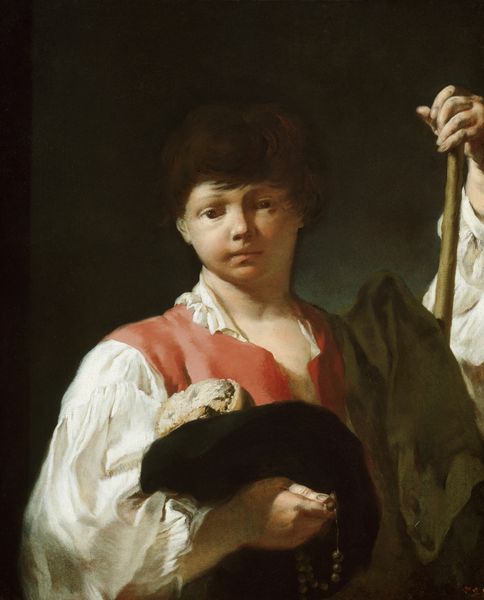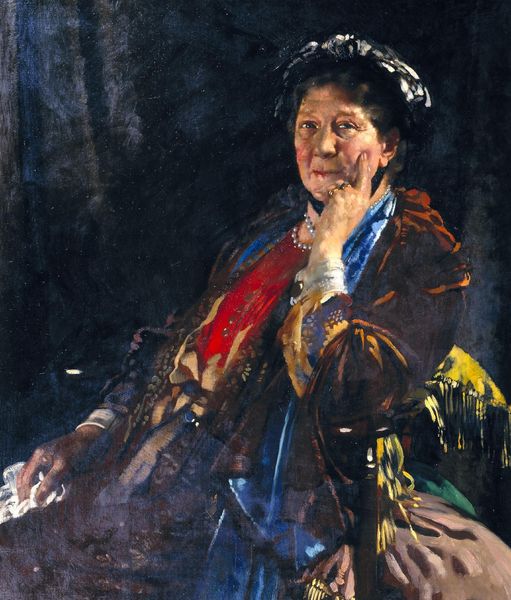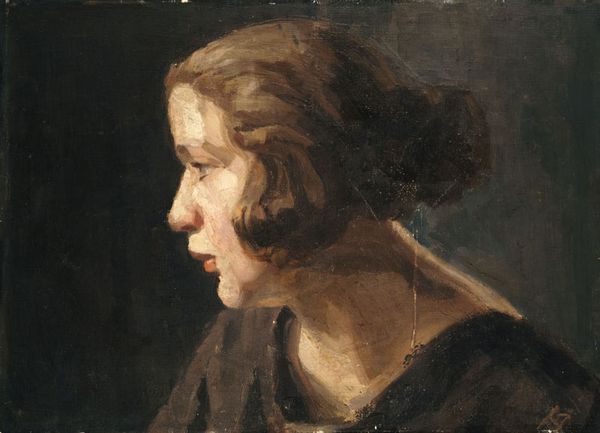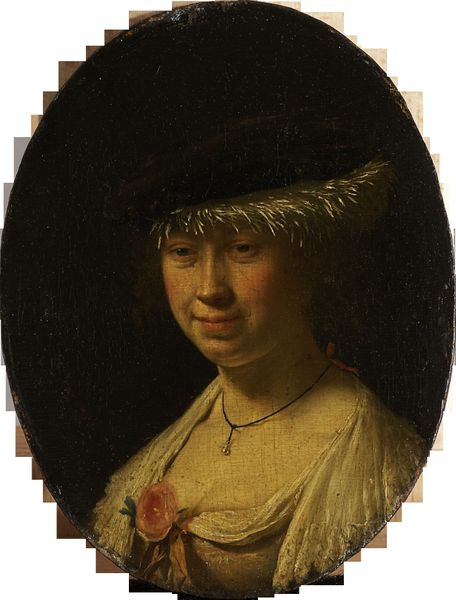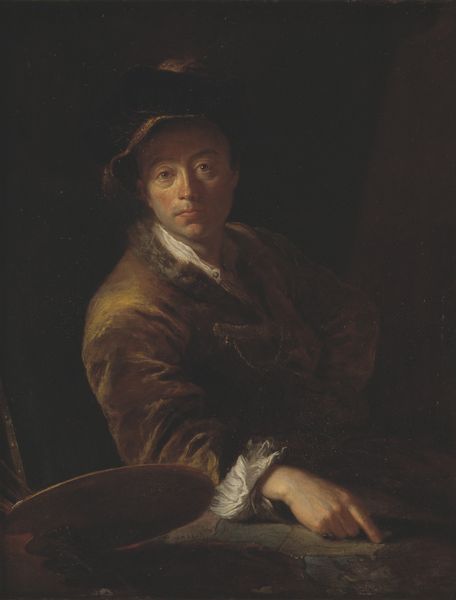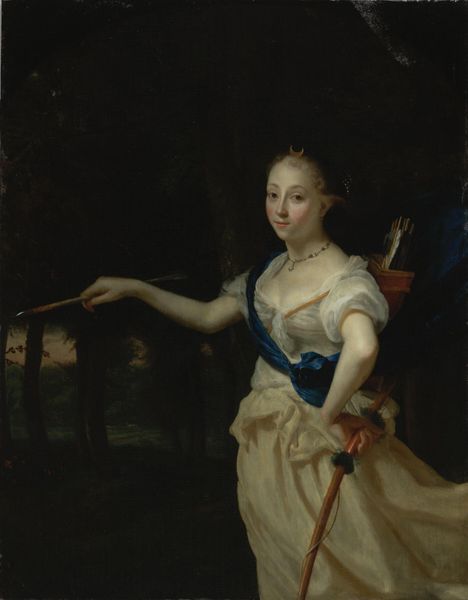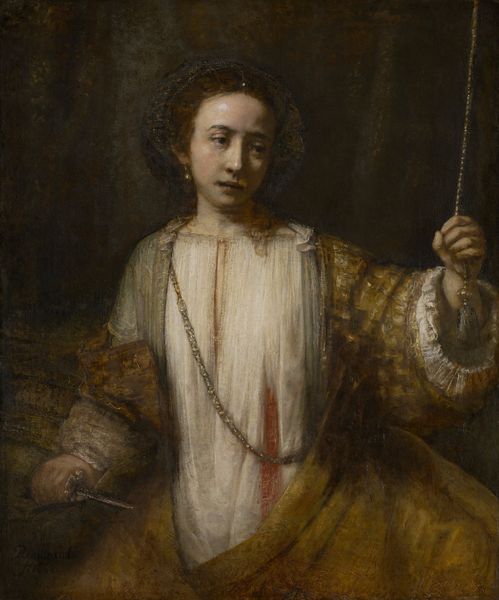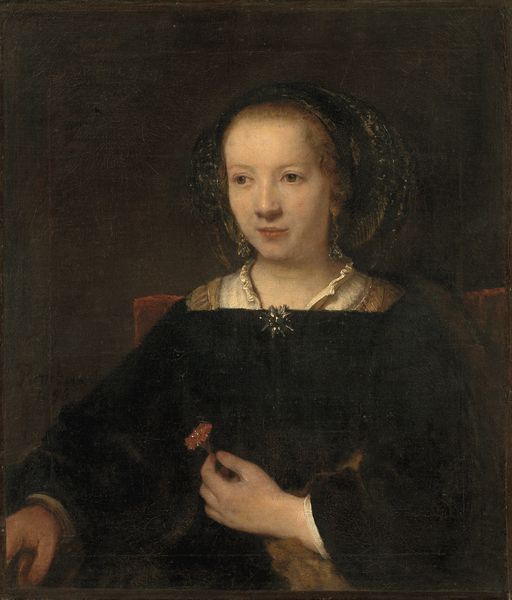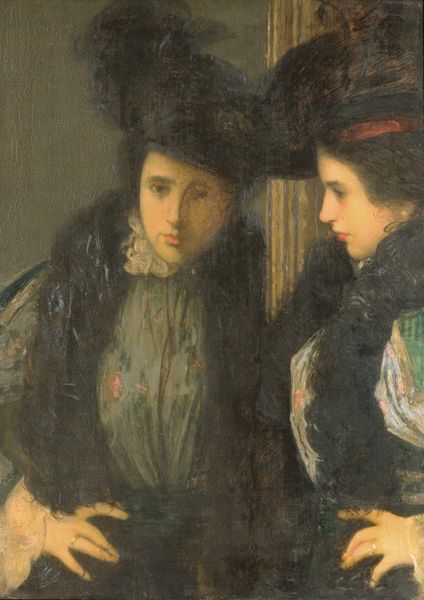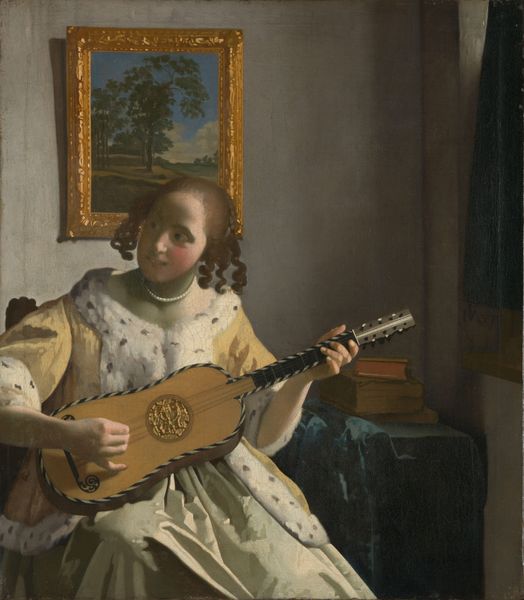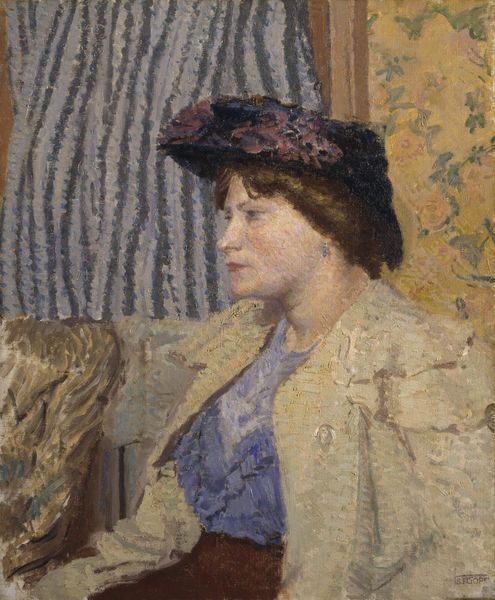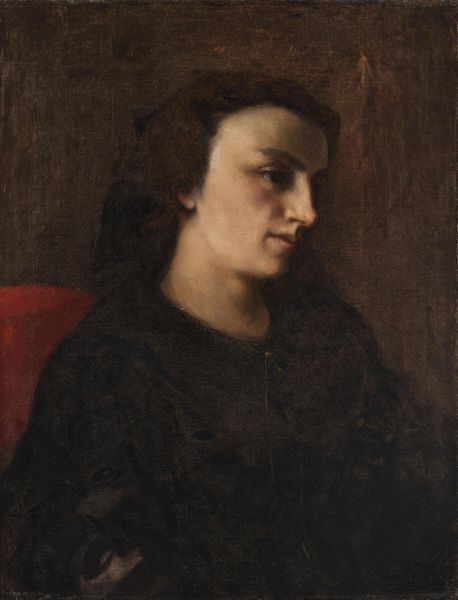
painting
#
portrait
#
baroque
#
dutch-golden-age
#
painting
#
genre-painting
Dimensions: 20.2 x 18 cm
Copyright: Public domain
Editor: We're looking at Vermeer's "Girl with a Flute," painted around 1666. I’m struck by the girl's rather simple attire considering the exotic flair of her hat. What can you tell us about this intriguing piece? Curator: What interests me is considering the materiality of the painting, the pigments themselves. Vermeer's skill in manipulating lead-based paints, for example, to create that characteristic luminosity...it points to the socio-economic structures supporting his access to those materials. Where did the pigments originate, and how did they impact the working conditions of those who produced them? Consider also the craft of painting itself - his techniques involved layering and glazing, time-intensive methods possible thanks to wealthy patrons. Editor: So, you're saying the materials used tell us about wealth and labour of the time? I hadn't really thought of it like that. Curator: Precisely. And not just wealth, but the global trade networks necessary to acquire certain pigments. Ultramarine, for instance, came from lapis lazuli mined in Afghanistan. Think of the sheer scale of that supply chain represented in this single painting! Furthermore, analyzing Vermeer’s studio practices – did he grind his own pigments, how long did this work take – tells us about value placed on artisanal skill vs commissioned painting. Editor: That's fascinating! It’s almost like each brushstroke contains a whole story about resources, production and wealth. Did Vermeer reflect that economic perspective within his choice of subjects? Curator: It's crucial to recognize the role of artistic patronage within the Dutch Golden Age. The rising middle class became eager consumers of art, shaping market demand. Vermeer painted genre scenes often showing quiet domesticity which idealized home life, possibly as aspirational depictions intended for consumption by this new audience. Editor: This new perspective changes the way I will look at art forever. Thank you. Curator: Indeed. When examining any artwork, questioning how the means of its production influenced its appearance and meaning will enhance how one perceives both its social and art-historical context.
Comments
No comments
Be the first to comment and join the conversation on the ultimate creative platform.
